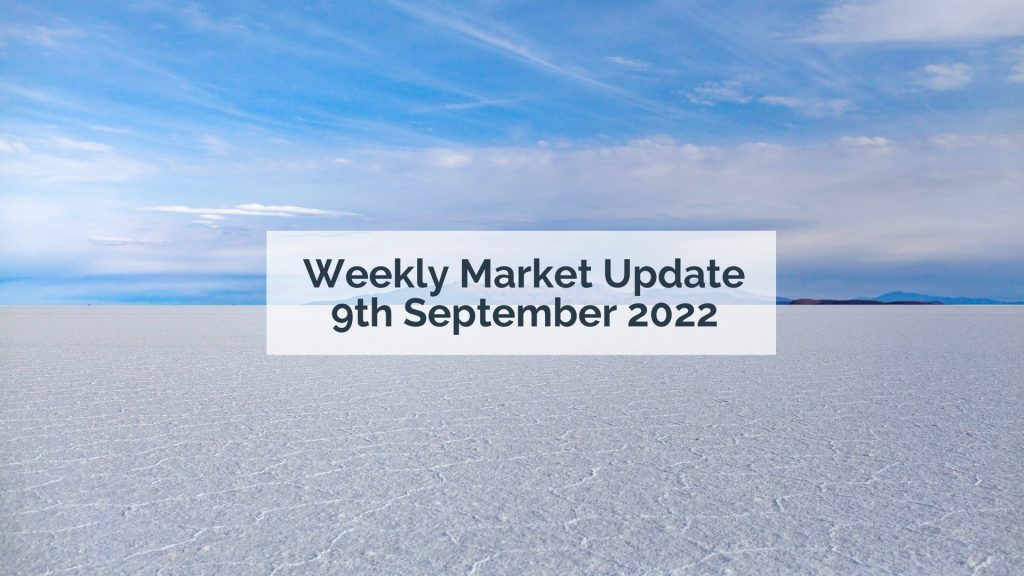
Weekly Market Update 9th September – Dollar eased from its recent highs with further downside risks seen
Weekly Market Update 9th September – Dollar eased from its recent highs with further downside risks seen
1. Dollar eased to below 109 on Friday, after rising to levels near 111, weighed down by market conditions and the tightening of monetary policies globally. The speech by Fed Chair Jerome Powell on Thursday was in support of the expected 75 bps interest rate hike in September, with strong emphasis on a hawkish Fed stance until inflation is significantly brought down. Upbeat businesses and jobs data also contributed to improving market sentiments, with ISM Services PMI rising to 56.9, higher than its forecasted 55.4, and unemployment claims at 222k, lower than the previous month’s 228k. Various speeches by Fed members all stayed in support of the 75 bps hike, while paying attention to possible downsides. Benchmark rates could increase above 4% by the end of the year if interest rates show no signs of falling, lowering purchasing power. In the coming week, investors will be looking at Retail Sales and CPI data for August, the last report before the FOMC meeting.
2. The Euro rallied against the Dollar, rising above $1.01 on Friday as the ECB declared its hawkish position and possibility for further interest rate hikes. The ECB announced its largest ever interest rate hike of 75 bps, with ECB President Christine Lagarde noting the need for the supersized hike to counter August’s 9.1% inflation, which is far from its target rate of 2%. The Euro’s economy is expected to be stagnant for the coming months, before any impact can be seen on the interest rates. On the data front, Eurozone Retail Sales for July rose 0.3% month-on-month, greater than previous month’s -1%. Employment change and GDP also rose by 0.4% and 0.8% respectively, greater than expectations. The British Pound recovered slightly above the $1.16 level after falling to new lows of 1.14 on Wednesday, with the political uncertainty ahead of the Prime Minister elections. Despite temporary relief from the energy support package announced by the new Prime Minister Liz Truss, the Pound is likely to remain fragile in the longer term. Looking ahead, notable publications next week include GDP growth, unemployment and inflation numbers.
3. The Canadian dollar strengthened against the greenback at the end of the week, with USDCAD retreating from its high of $1.32 seen earlier this month. The Loonie was supported by BoC’s decision to increase benchmark overnight rate by 75 bps, bringing it up to 3.25% on Wednesday, the highest since 2008. Markets continue to anticipate further hikes to bring down inflation, with a possible 50 bps hike in October. The Aussie strengthened to $0.685, supported by the weakening dollar and 50 bps rate hike announced on Tuesday by the Republic Bank of Australia, bringing the official interest rate of 2.35%. Concerns for the struggling property market have also been amplified amid higher interest rates, with property prices now falling at its fastest rate since the 1980s. In the coming week, investors will be looking at the effect of this interest rate hike as well as the release of unemployment data to determine subsequent market expectations. Similarly, the Kiwi appreciated slightly after a 3 week decline, buoyed by the weakening dollar, with forecasts of further depreciation amidst the uncertain global outlook. Quarterly GDP data released next week will allow markets to have a better sensing of future growth.
4. Brent crude futures approached $92 per barrel on Friday, with dollar weakness boosting its rally amid the weakening global outlook for oil. Demand for oil is anticipated to remain fragile, with the extended China lockdown in Chengdu under its zero Covid strategy, as well as aggressive interest rate hikes by major central banks. The announcement by OPEC+ to cut output by 100k barrels per day in October and the prolonged Iran nuclear deal have weighed down on the oil supply, contributing to the weak growth sentiments. Elsewhere, gold prices rose near $1730 last week, pulling back from its near year low of $1690. Looking ahead, the hawkish Fed sentiments continue to limit the upside in gold prices.



